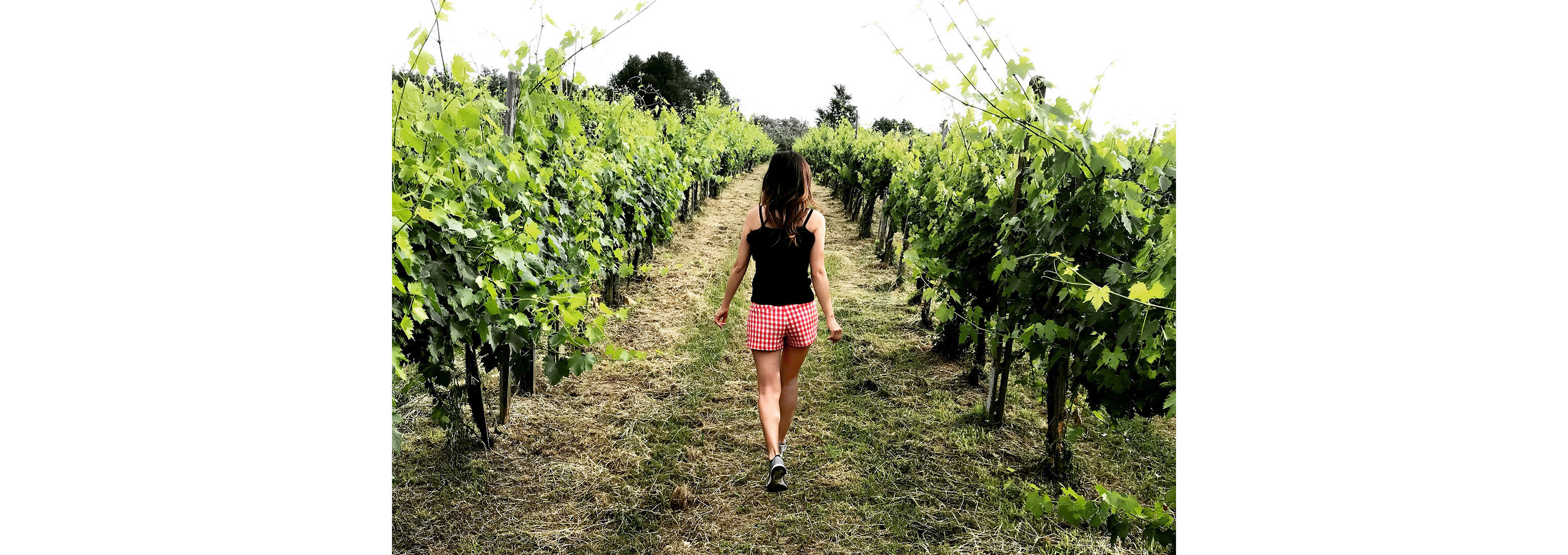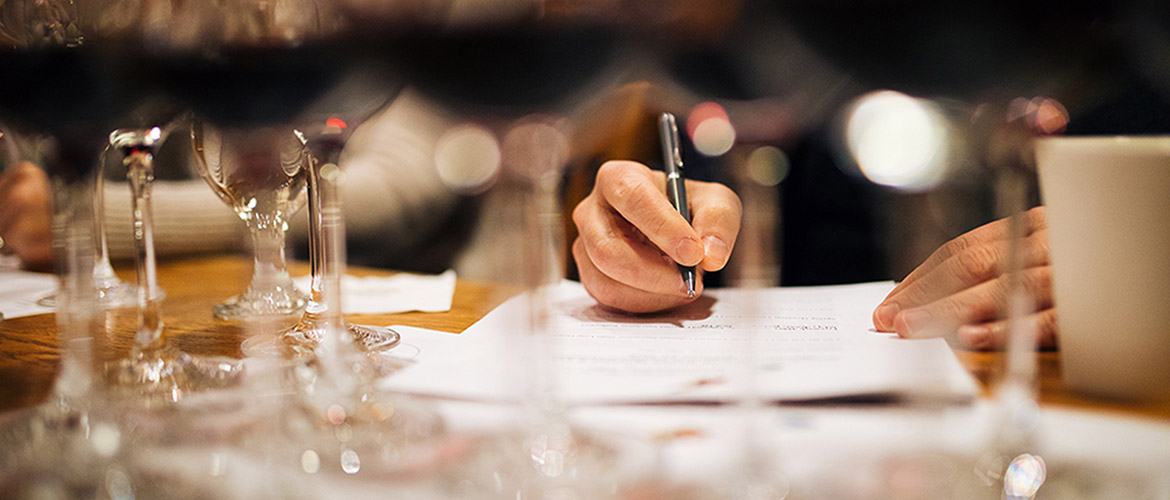Award-winning duo Kirk Peterson and Marisa Finetti are an unlikely match, but they share a love of food and drink. In their column, TasteBuds, (originally published in VEGASSEVEN.com) they devour dishes and demystify drinks.
Aside from knowing that having a day job would be more helpful in paying the bills, being a wine writer can be a beautiful thing. And if you visit Napa Valley, like Marisa Finetti and I recently did during the Professional Wine Writers Symposium at Meadowood in mid-February, how can we disagree? After mingling with wine writers from all over the globe, including The Wine Bible author Karen MacNeil and Decanter Magazine’s and keynote speaker at the event Steven Spurrier, we’d retreat back to our luxurious cottages nestled in the forested hills of Meadowood Napa Valley resort; it’s paradise that made us think, “Ah, we can do this for days!” And we did.
Did you know that there are more patron saints of wine than just Saint Martin and Saint Vincent? Or that Chiles Valley District is an American Viticultural Area of Napa Valley? How about that the average bottle of Champagne contains three times the pressure of a car tire? And that people who collect the little logo caps on top of the Champagne corks are called placomusophiles? After learning, exchanging and bantering in between sipping, eating and repeating, we left with the realization that wine writing is work and play. But it doesn’t really pay the mortgage; it pays the cable bill if you’re lucky. But we push forward at the thought of getting published in the likes of Decanter, Wine Enthusiast or Food & Wine. More importantly, we push forward because we are indisputably driven by the juice.
In this era, there are many types of wine writers: those who solely produce reviews in which you’ll come across jargon such as “hedonistic” and “girthy,” and those who get assigned to write about Virginia wine because, well, it’s there. There are the writers who specialize in telling stories of the people behind the wine and, fascinatingly enough, there are those who pen about the topic for cruise ship publications.
What exactly do we do? We write to inform and demystify the topics of food and wine. We are expected to be the first to form opinions and to communicate them honestly so our readers have a guide to form their own opinions.
So here we go: Napa. Let’s lift the smoke off the dreaded fires that the media—from wine journals to major television networks—have sadly sensationalized, turning this verdant valley into an apocalyptic war zone ostensibly incapable of welcoming visitors.
For starters, we didn’t notice a patch of ash anywhere, at least on the valley floor. To be clear, the Northern California fires of October 2017 were a tragedy. We learned at the symposium that specifically in Napa seven lives were lost, more than 600 homes destroyed and more than 1,000 structures burned. But we heard from panelists—which was composed of a U.S. congressman, an economics professor, a university faculty farm advisor and a winemaker—who explained that while the physical and environmental impacts on the wine industry itself were minimal, images of a spoiled wine country and tainted wine continue to linger. And this misrepresentation is a looming disaster which Napa Valley is now doing everything in its power to combat.
In fact, findings from Sonoma State University Wine Business Institute revealed that 99.8 percent of North Coast vineyard acres were unaffected by the fires, and only .5 percent of the 2017 wine grape crop was lost. Most of the grapes were harvested before the fires and since it was a sizable harvest, a generous amount of wine will be available.
So how do these natural disasters in winemaking regions get reduced to a general negative view? Are they ignited by summaries by S&P Global Ratings, for example, which reports on the debt among entities located near the fires? Or headlines that read “California wildfire disaster could bring fiscal pain to communities for years to come” when they are mostly referring to home casualties? Catastrophic events are attention-getting, but the reality is wine has been grown, bottled, distributed and enjoyed for millennia across climates that have endured many naturally occurring disasters.
Fine wine in general can be met with a certain degree of skepticism and derision. One reason is likely the complexity of bottle prices—why does one wine costs several thousand times more than another?—that some people may not have the patience to understand. That’s why it’s so tempting to simply reduce the value and relevance of any given wine to a simple point-based score.
Last year’s wildfires will and should be remembered for the tragedy that they were, but it’s imperative that the Napa Valley vintage of 2017 not be grouped so carelessly.
It’s picturesque as heck in Napa Valley. Dormant vines with vibrant and happy rows of mustard flowers usher in spring and promise. Yes, vineyard barn structures and equipment perished. But the vines? They remain healthy, and while the underbrush took the singe, that really just provides more nutrients for the soil.
At the symposium we enjoyed hundreds of Napa Valley wines, many of which were cabs, of course, plus a supporting cast of cabernet franc, petit verdot, merlot and malbec, by producers such as Corison, Lang & Reed and Merryvale, plus a variety of valley-grown whites. Napa sparkling wines were always in the mix, particularly Schramsberg—a personal favorite for domestic sparkling. The gala dinner presented us with the likes of Matthiasson’s Ribolla Gialla, Chase Cellars’ Zinfandel and even late harvest from Grgich Hills. Lunches took us through a series of rosés, notably Antica-Antinori’s rosé of Sangiovese and Lagier Meredith’s Syrah rosé.
And of course, while in Napa, it’s always a good idea to see what’s new in the food scene, so on a free night, we checked out Charlie Palmer’s new concept in downtown Napa, Charlie Palmer Steak Napa. The sparkling vibe is the place to gather for bold steakhouse food that reflects Palmer’s signature style. We started with fresh oysters, bubbles and a yellowfin tuna stack with green papaya, avocado and citrus ponzu. Later, we moved on to pig ear pad Thai, littleneck clams casino and American steaks with mashed potatoes garnished with shaved truffes, and decadent peanut butter terrine provided a sweet finish. Palmer’s place has a 400-deep wine list—mostly from the region, but with respectable selections from around the world. With a week of Napa wines, Italian was a good option that night, an Antoniolo Gattinara 2011.
Another spot we enjoyed was Redd Wood in Yountville. We’ve been to Chef Richard Reddington’s Redd in the past, so we were certain his Wine Country pizzeria featuring wood-fired pizzas, pastas and salads would be a good midweek switch-up. We started with fritto misto and romaine with anchovies, and ended with the prosciutto pizza with fontina, arugula, grana padano and black pepper, all paired with an older bottle of Verdicchio.
So what does it mean to be a wine writer, besides eating and drinking well? It’s telling stories about wine, the people behind it, and the history, cultures and traditions that make it so damn interesting. It’s also about delivering stories that combine our expertise and enthusiasm that impart our passion with readers and audiences alike. And sometimes it’s about clearing up news—as you read here—that would otherwise impact an entire vintage at one of the most recognized wine regions in the world.
And you know what? It’s all good in Napa Valley.

